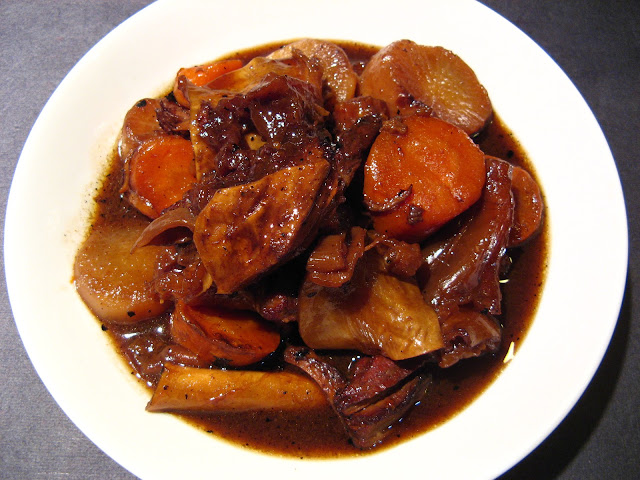This recipe was updated on 23 Sep 2014. Some instructions
and ingredient quantities were changed.
Beef outside flank (also called drop flank) and beef tendon
go together to make a classic Chinese stew. Beef outside flank is a thin cut of
meat from the cow with silver skin, which requires long slow cooking to become
tender and is available at your local Asian market. The silver skin is an
integral part of the stew, so it shouldn’t be removed before cooking! This cut
of meat should not be confused with the more common beef flank or flank steak,
which is used for stir frying. Beef tendon is tough and requires long slow
cooking, at which time it becomes soft and gelatinous, so it’s totally about
mouth feel. Chee Hou sauce is the other important ingredient. Chee Hou sauce is
similar in taste to hoisin sauce (which can be substituted) and has a slightly
spicier taste to it.
Starting with this recipe, I’ve changed the format to
include metric measurements and a list of the equipment needed to make the
dish. Living in the USA all my life, I’ve always used the English measurement
system, so from now on I hope the recipes are friendlier to the rest of the
world.
Enjoy!






